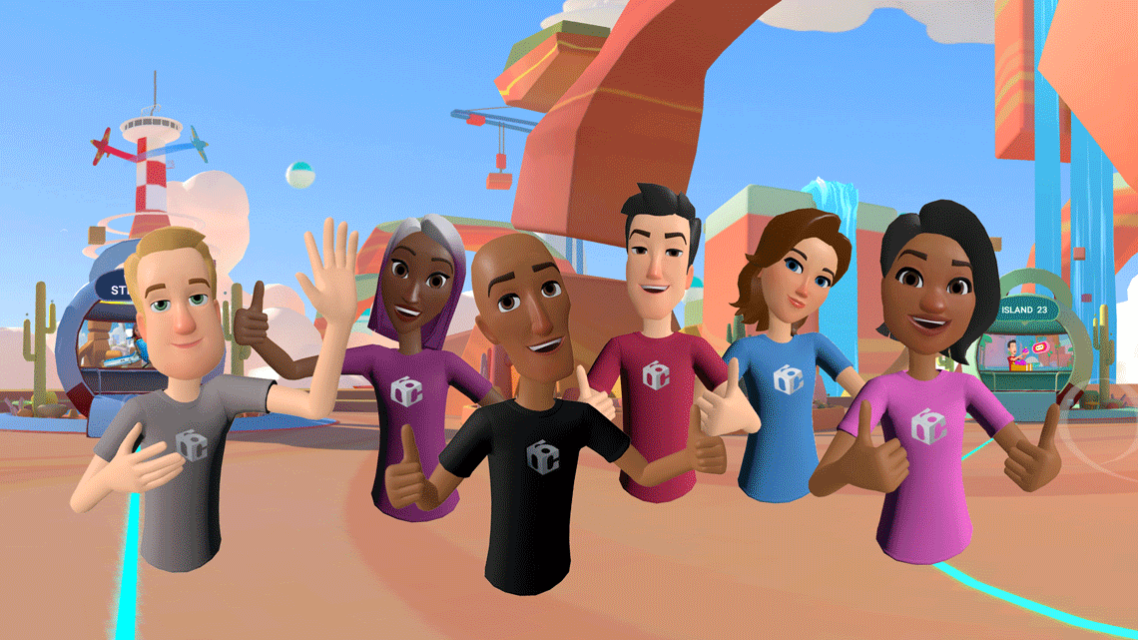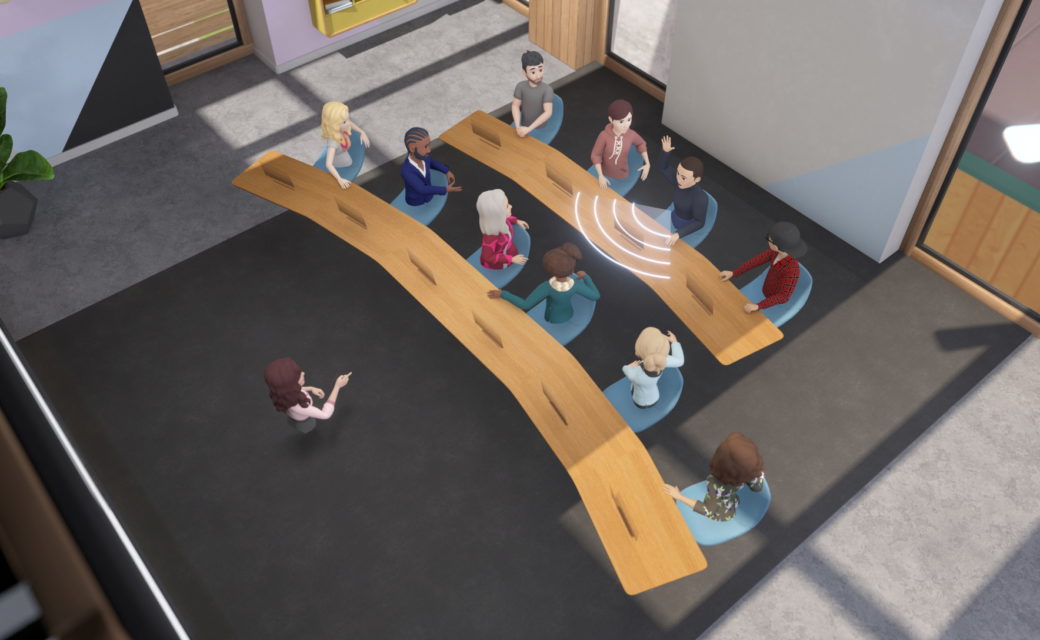Did you know that events can be held in the Metaverse universe? If you do not know what to do for the preparation and organization stages of the events planned in the virtual and augmented reality environment, we have compiled all the information you need to know for you.
What is Metaverse event management?
Planning, coordination and execution of various activities in virtual and augmented reality environments is called metaverse event management.
The merging of physically persistent virtual reality with virtual enhanced physical reality has created the metaverse, a shared virtual shared place. It includes immersive digital environments such as augmented reality (AR), virtual reality (VR) and others.
Event management in this context entails producing and presenting events in these digital spaces, including conferences, concerts, exhibitions, workshops, social gatherings and more.

Steps to host an event on Metaverse
Hosting an event on Metaverse includes a few basic steps to create an engaging digital experience. These phases, which include defining the concept and objectives (pre-event preparation), choosing the platform, creating content, and running the event in a virtual environment, pave the way for an immersive event that appeals to a worldwide audience.
In the dynamic metaverse, a successful event is complemented by post-event activities such as hosting, receiving feedback, and maintaining connections.
1. Define the event concept and objectives
The pre-event planning phase is the first and most important step in organizing a successful event in the metaverse. This crucial phase requires a variety of tactical choices and actions that lay the groundwork for the entire event.
It includes setting clear goals, building an expert team, choosing the right platform, allocating adequate budget, tackling legal issues, and developing an interesting event concept. This extensive groundwork is essential for the next phases of event concept and implementation within the dynamic and immersive metaverse.
2. Technical setup
The technical setup step turns the event concept into a functional virtual experience. It is necessary to establish the chosen metaverse platform, produce avatars or digital representations and develop the virtual space.
Also, integrating interactive elements such as live chat, virtual network spaces and multimedia presentations is necessary to engage the audience. To ensure a seamless experience, it is also essential to ensure flawless audio-visual quality, verify user accessibility, and resolve technological issues.
3. Marketing and promotion
Emphasis is placed on resonating and attracting attendees in the marketing and promotional phases. It is essential to use both traditional and metaverse-specific marketing platforms to reach people.
Arousing interest in an event is facilitated by creating captivating event content, trailers, and promos. Reach can be increased through social media channels, influencer alliances and metaverse community interaction. In addition, participation can be encouraged by implementing ticketing systems and developing tier-based access alternatives.
Depending on user preferences and budget, these tiers provide guests with varying degrees of involvement and benefits. For example, a basic tier grants access to the main event sessions, while the premium and VIP tiers can provide extra benefits such as exclusive workshops, personalized interactions, and unique content. This strategy maximizes inclusivity and gives participants the freedom to choose the level of engagement that best suits their needs and interests.
4. Running the event
The event execution phase is the culmination of meticulous planning and preparation. Everything at this stage works together to create an immersive experience. Attendees communicate, network and attend events, while presenters hold talks, panels or concerts online.
Real-time technical support is essential to resolve any issues that may arise. Making quick adjustments for an optimal experience during the event requires considering attendance data, crowd reactions, and technical performance.
5. Post-event activities
The post-event activities phase starts after the event ends. This stage includes various actions such as obtaining input from participants through surveys or polls to determine satisfaction and gain insights for future changes. Sharing highlights or recorded sessions keeps people engaged long after the event.
Using user-generated content, including images and recordings, helps create a social media buzz after an event. Also, maintaining relationships developed during the event is facilitated by organizing follow-up sessions, virtual meetups or networking opportunities.

How much does it cost to host an event on Metaverse?
The cost of hosting an event in the Metaverse can vary greatly and depend on a number of variables. These factors include the complexity of the event, the metaverse platform chosen, the expected number of attendees, the level of customization desired, and the variety of features included in the event experience.
Metaverse platforms can charge users based on various criteria such as event hosting, number of attendees. Investing in 3D modeling, interactive features and immersive visuals is required to create an engaging virtual space, and the prices equate to the complexity of the design.
Expenses include audio-visual equipment, broadcast services, and technical support staff to provide seamless technical implementation. The cost of promotion also includes influencer partnerships, social media marketing, creating promotional materials and other similar activities. Other factors that may affect the cost include content production, avatar customization, networking tools, security measures, training and post-event engagement activities.
Careful budget preparation, getting quotes from relevant service providers, and an in-depth study of metaverse platforms will be helpful in order to estimate costs accurately. It’s also wise to compare potential revenue streams from ticket sales, sponsorships or other sources with these costs to gauge the event’s financial feasibility.
Difference between traditional events and metaverse events
Traditional events and metaverse events represent two different paradigms of gathering and participation. At traditional events, participants physically gather at a predetermined location, encouraging face-to-face interactions, relying on physical arrangements, and complying with geographic restrictions.
In contrast, metaverse events take place in virtual 3D environments that transcend geographic boundaries, allowing attendees to participate and engage in interactive events via customizable avatars.
While traditional events offer a physical sense of place, metaverse events provide an immersive digital experience and illustrate the changing landscape of event hosting in an increasingly connected world.
Disadvantages of doing events in Metaverse
Hosting virtual venues on Metaverse brings with it increased cases of harassment and inappropriate behavior, as evidenced by the cases of sexual harassment against women. Due to the anonymity of sandboxes, people may behave in ways they would not do in real-world environments, making the environment uncomfortable and unsafe for participants.
Other issues include the possibility of a digital divide due to privacy breaches, technical difficulties and lack of knowledge of the technology. To mitigate these dangers and create a welcoming environment, organizers should develop clear codes of conduct, apply strong moderation, emphasize data security, and provide user-friendly information.
Other significant risks include intellectual property violations, platform reliability issues, and misunderstandings caused by a lack of concrete clues. These risks can be mitigated by using secure content exchange protocols, careful selection of platforms, extensive testing, and providing transparent communication channels. Metaverse event planners can proactively address these risks, creating an environment that encourages participation, diversity, and educational experience for all attendees.







